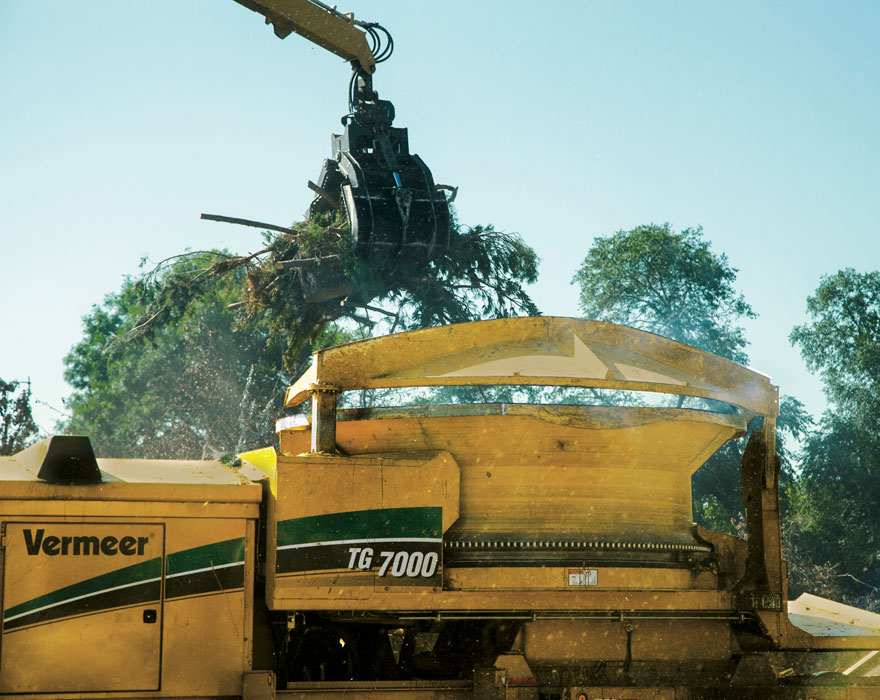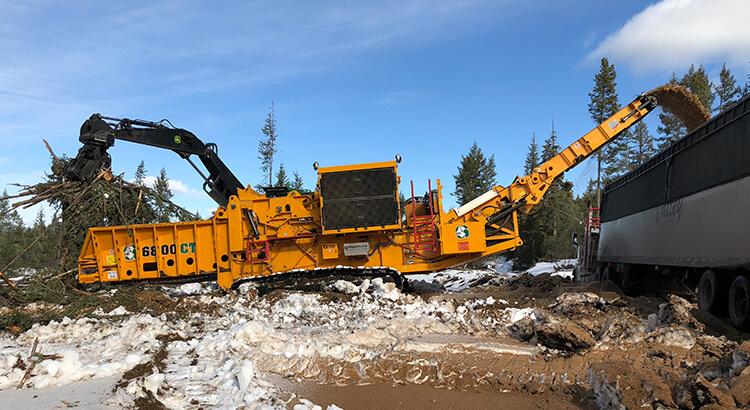Take Full Advantage Of Performance with High-Quality Wood Grinders - Tailored Solutions for every single Task
Take Full Advantage Of Performance with High-Quality Wood Grinders - Tailored Solutions for every single Task
Blog Article
Maximize Source Efficiency With High-Quality Timber Grinders for Recycling Workflow
Worldwide of reusing operations, maximizing source effectiveness is a leading priority. One key element to achieving this objective is using high-quality timber grinders. These powerful equipments play a critical duty in damaging down timber waste into smaller sized, much more convenient items, allowing for less complicated processing and recycling. Yet what makes a wood grinder genuinely high-grade? And how can it add to optimizing source effectiveness? In this conversation, we will check out the importance of wood mills in reusing, explore the different kinds available, highlight their advantages in resource performance, and provide suggestions for choosing the appropriate grinder for your particular procedures. So, allow's dive in and discover exactly how these exceptional makers can change your recycling endeavors.
The Importance of Wood Grinders in Recycling
Timber mills play a crucial role in the reusing sector by successfully breaking down and refining wood waste materials. As the demand for sustainable waste management options remains to expand, timber mills have actually ended up being a vital tool for recycling procedures. These equipments are created to manage various kinds of timber waste, including pallets, lumber scraps, tree branches, and much more.
Among the vital reasons that wood grinders are so vital in the recycling industry is their capacity to minimize the volume of timber waste. By breaking down large items of wood right into smaller sized, much more manageable dimensions, these grinders develop a much more effective and cost-effective process for reusing. This reduction in quantity not only conserves important landfill area however also minimizes transportation prices related to carrying large timber waste.
Additionally, wood mills help to enhance the overall high quality of recycled timber materials. By properly damaging down timber waste, these devices get rid of pollutants such as nails, screws, and various other pollutants, ensuring that the recycled timber is tidy and appropriate for reuse in different applications. This quality assurance is vital for industries that depend on recycled timber, such as construction, furnishings production, and biomass energy production.
Kinds Of High-Quality Timber Grinders
Various sorts of premium timber mills are readily available on the market to satisfy the certain demands and needs of reusing procedures. These wood grinders are created to successfully and successfully procedure timber waste, transforming it right into beneficial sources such as compost, biomass gas, or garden compost.
One kind of timber mill commonly used in recycling operations is the straight mill. This sort of mill is known for its capability to deal with large volumes of wood waste and produce a consistent end item. Straight mills are commonly geared up with a powerful engine and a big grinding chamber, allowing them to process a vast array of products, consisting of whole trees, stumps, and brush.
An additional sort of timber mill is the bathtub grinder. Tub mills are defined by their cylindrical shape and the presence of a bathtub or receptacle where the timber waste is packed. These grinders are typically used for handling cumbersome materials such as pallets, construction debris, and environment-friendly waste. Bathtub grinders are recognized for their adaptability and ability to create a premium final product.
Along with horizontal and bathtub grinders, there are also specialized timber grinders readily available for certain applications. As an example, chipper mills are created to produce timber chips, which are typically utilized in the pulp and paper sector. Mulch grinders are utilized to generate mulch, which is extensively used in landscape design and horticulture.
Advantages of Making Use Of Wood Grinders in Source Performance
Wood mills offer many benefits for recycling procedures, helping to make best use of resource effectiveness and maximize the processing of wood waste. Among the key benefits of using wood mills is their capacity to lower the volume of timber waste. By grinding timber waste into smaller, a lot more convenient pieces, wood grinders allow for boosted storage space and transportation efficiency. This indicates that even more waste can be refined and reused, leading to a reduction in garbage dump use and linked prices.
An additional benefit of timber mills is their capability to create a top notch and regular final result. Timber waste that is refined with a knockout post a mill can be transformed into important materials such as wood chips or compost, which can be utilized in different industries, including biomass, landscaping, and farming power manufacturing. The constant size and appearance of the refined material additionally make it less complicated to make use of in manufacturing procedures, such as the manufacturing of composite wood products.
Along with maximizing source effectiveness, wood mills likewise add to environmental sustainability. By reusing wood waste as opposed to sending it to garbage dumps, carbon emissions and methane production can be significantly minimized. In addition, making use of timber grinders aids to protect natural deposits by promoting using recycled timber materials rather than gathering new hardwood.
Tips for Choosing the Right Timber Grinder for Recycling Workflow

Another crucial variable to consider is the dimension and ability of the wood grinder. It is essential to pick a grinder that can deal with the predicted quantity of wood waste without creating hold-ups or overloading the maker. Additionally, the size of the mill must be compatible with the readily available space in your facility.
The source of power of the timber mill is also an essential factor to consider. Mills can be powered by electrical energy, diesel, or hydraulics. Each source of power has its own benefits and drawbacks, so it is important to choose the one that ideal fits your functional needs.
In addition, it is important to think about the upkeep needs of the timber mill (wood grinders). Seek a mill that is resilient and simple to preserve, with obtainable components and a dependable support network for servicing and repair work
Finally, think about the safety features of the wood grinder. Look for attributes such as emergency situation quit switches, security guards, and automatic shut-off systems to safeguard operators and avoid accidents.
Best Practices for Optimum Efficiency With Wood Grinders
To make sure optimal performance with timber mills, it is important to execute a set of ideal methods. These methods can help make best use of the performance and efficiency of the grinding process, causing greater efficiency and better top quality output.

Second of all, correct feeding methods ought to be followed. It is recommended to feed the mill slowly and uniformly, avoiding straining the equipment. This makes certain that the timber is processed efficiently and reduces the threat of jamming or blocking.
Additionally, selecting the ideal display size for the wanted final result is vital. Different display sizes can produce various sizes of wood chips or compost, so it is essential to choose the one that ideal suits the desired application.
Moreover, operators need to be trained on the proper procedure of the wood mill. This includes understanding safety and security procedures, operating treatments, and troubleshooting strategies - wood grinders. Well-trained drivers can lessen the risk of crashes and optimize the mill's performance
Verdict
In final thought, top quality timber grinders play a crucial function in optimizing resource performance in recycling next page operations. By effectively minimizing and processing wood waste, these mills contribute to a much more environmentally friendly and lasting strategy to reusing. It is necessary to very carefully choose the ideal timber grinder for details recycling operations, thinking about variables such as durability, capability, and power. Following finest methods for ideal efficiency can better boost the efficiency and efficiency of timber mills in reusing.
Timber mills play a vital duty in the reusing market by effectively damaging down and processing timber waste products.One of the essential factors why wood mills are so important in the recycling industry is their capability to decrease the volume of timber waste.Timber grinders offer countless benefits for recycling operations, aiding to make the most of resource performance and enhance the processing of timber waste. By grinding timber waste into smaller sized, extra convenient pieces, timber mills allow for raised storage and transportation performance. Wood waste that is refined with a grinder can be changed into beneficial products such as wood chips or mulch, which can be made use of in different sectors, including agriculture, landscape design, and biomass energy manufacturing.
Report this page